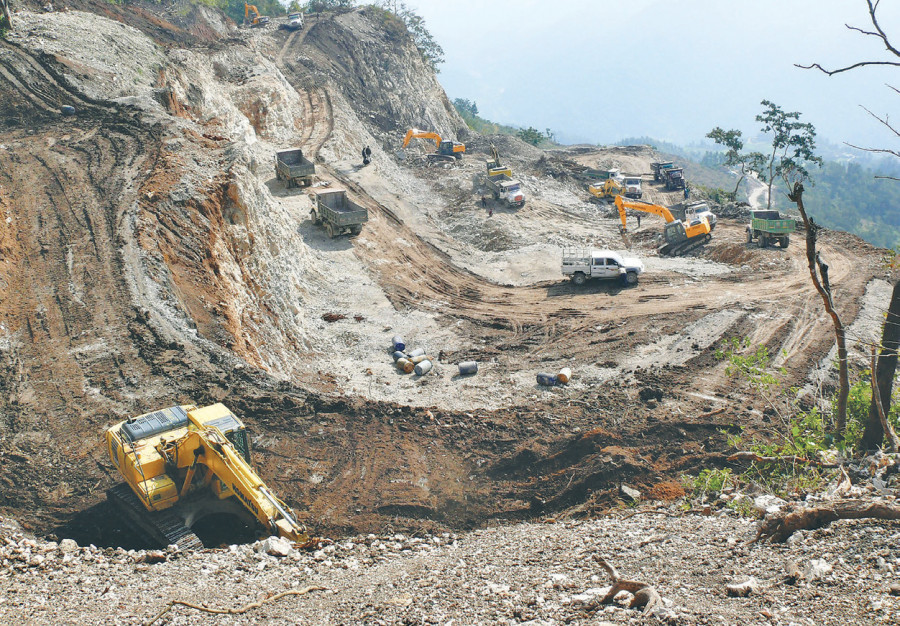Editorial
High and dry
Infrastructures built without proper planning end up causing long-term destruction.
That the consequences of human greed for development, luxury and capital accumulation has caused immense stress on ecology and the environment globally is no news anymore. Nepal's footprint in global emissions is pretty tiny, at 0.027 percent of the total global emission, and it has made significant commitments to climate justice, including increasing forest cover to 45 percent and ensuring that all vulnerable people are protected by climate change in 2030. But ambitious obligations, which, according to experts, are not too difficult to meet, need to be followed by action. As of now, it is not clear whether it has the willpower and the roadmap to translate those commitments into action.
If the crises that have started to become the norm rather than the exception are to go by, we are already lagging in fulfilling those commitments. One such example is the exploitation of the Chure hill range over the years, without little concern for the ecological crises that lay ahead. As the Post reported on Tuesday, paddy fields along the southern slopes of the Chure hills have become parched in the past few years as water sources dry up and riverbeds become full of silts. But the crisis in the Chure range is just the tip of the iceberg, as the ill effects of human intervention in the natural world are now ubiquitous. The drying up of water sources, among other things, leads to a crisis in agricultural production and a possible food crisis. In a climate-vulnerable country like Nepal, the food crisis is a significant threat, especially since a fifth of the population lives below the poverty line and many more just manage two square meals a day.
In Nepal, the juggernaut called development has, for the past few decades, been causing massive destruction. Power brokers with economic interests start haphazard construction projects. No matter how good the intention, infrastructure projects built without proper engineering and planning end up causing long-term destruction. With Nepal adopting the federal system, local level governments, which have greater economic autonomy, have been using their resources on development projects with little planning. As a result, earthmovers digging up land and concrete structures erecting are ubiquitous across the country. As a result, groundwater level has depleted sharply, and irrigation canals irrigating paddy fields for decades and centuries have lost their links to the paddy fields.
As of now, there is enough research pointing to the problematic future that lies ahead: large-scale climate refugees as a result of the climate crisis. The World Bank has estimated that more than 200 million will become climate refugees by 2050. The latest report by the UN's Intergovernmental Panel on Climate Change has spoken of the magnitude of the crisis that lay ahead, as it unequivocally warns that human actions have already caused some irreversible damage to the ecosystem of the earth. No matter how small our footprint is on global emissions, a vulnerable country like Nepal must lead by example in showing that ecological sensitivity can go hand-in-hand with development.




 18.12°C Kathmandu
18.12°C Kathmandu














